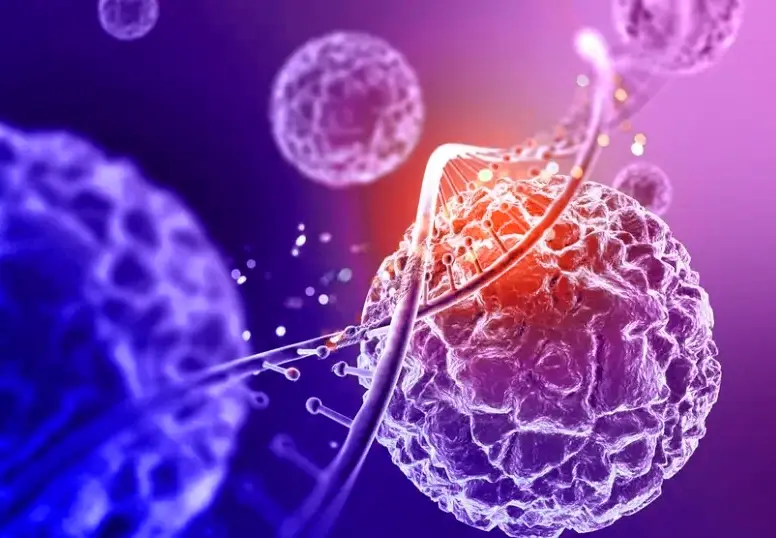Okay, let's talk about enzymes! You might not realize it, but these tiny powerhouses are working non-stop inside you, making sure everything runs smoothly. Think of them as the unsung heroes of your body, without whom life as we know it simply wouldn't be possible.
What Exactly Are Enzymes?
In the simplest terms, enzymes are special kinds of proteins. Their main job is to speed up chemical reactions in your body. Imagine you need to build a complex Lego castle, but you only have tiny individual bricks. Building it by hand would take forever! An enzyme is like a super-efficient Lego-building machine. You put the raw bricks in, and poof, the section of the castle is built almost instantly. Without the machine (the enzyme), the process would be incredibly slow or might not even happen at all.
Every living thing, from the smallest bacterium to the largest whale, relies on enzymes for survival. They're essential for everything from digesting your food to repairing your cells and even thinking.
How Do Enzymes Work Their Magic?
Enzymes are incredibly specific, almost like a lock and key. Each enzyme typically has a unique shape with a special spot called an active site. This site is designed to perfectly fit a specific molecule or molecules, called substrates.
Here’s the basic idea:
- The Substrate Arrives: Imagine a nutrient molecule from your food (the substrate) needs to be broken down.
- Binding: The substrate fits perfectly into the enzyme's active site, like a key into a lock.
- The Reaction: Once bound, the enzyme gets to work. It might break the substrate apart into smaller pieces, or it might join different substrates together to build something new. It does all this very quickly.
- Release: Once the reaction is done, the new molecules (the products) are released from the enzyme.
- Ready for More: The enzyme then goes back to its original shape, ready to bind with another substrate molecule and repeat the process.
Understanding Elevated Liver Enzymes: What Your Body is Trying to Tell You.
What's really cool is that the enzyme itself isn't used up in the reaction. It can catalyse the same reaction over and over again, thousands or even millions of times per second!10
Where Do We Find Enzymes, and What Do They Do?
Enzymes are everywhere in your body, involved in countless processes. Let’s look at some key examples:
Digestion
This is one of the most obvious places where enzymes shine. When you eat, enzymes start breaking down your food into tiny molecules that your body can absorb.
- Amylase: Found in your saliva and pancreas, this enzyme breaks down carbohydrates (like starches in bread or rice) into simpler sugars.
- Protease (like Pepsin and Trypsin): These enzymes work in your stomach and small intestine to break down proteins (from meat, beans, etc.) into smaller amino acids.
- Lipase: Made in your pancreas and small intestine, lipase breaks down fats into fatty acids and glycerol.
Without these digestive enzymes, you wouldn't be able to get the nutrients from your food, no matter how healthy you eat!
Energy Production
Even getting energy from those broken-down food molecules relies on enzymes. They're critical in the complex steps that convert food into ATP, which is your body's energy currency.
Cell Repair and Growth
Your body is constantly building and repairing. Enzymes are involved in creating new DNA, building new proteins, and fixing damaged cells. They're like tiny construction workers.
Detoxification
Your liver, a master detoxifier, relies heavily on specific enzymes to break down harmful substances, like alcohol or toxins, making them harmless so your body can get rid of them.
Muscle Function and Movement
Every time you move a muscle, enzymes are involved in the chemical reactions that allow those muscle fibres to contract and relax.
What Affects How Enzymes Work?
Enzymes are fantastic, but they're also a bit sensitive. They need the right conditions to work their best:
- Temperature: Each enzyme has an ideal temperature.20 For human enzymes, this is usually around body temperature (37°C or 98.6°F). If it gets too cold, they slow down. If it gets too hot (like with a high fever), they can denature, meaning they lose their shape and stop working.21 Imagine our Lego-building machine melting – it's useless!
- pH Level: This refers to how acidic or alkaline a substance is.22 Enzymes also have an ideal pH. For example, the pepsin enzyme in your stomach works best in very acidic conditions, while enzymes in your small intestine prefer a more neutral environment.23 If the pH is too far off, the enzyme can stop working correctly.24
Enzymes in Real Life
Beyond our bodies, enzymes are used in many industries:
- Detergents: Many laundry detergents contain enzymes (like proteases, amylases, and lipases) to help break down tough stains like blood, food, and grease.25
- Food Industry: Enzymes are used in baking (to help dough rise), brewing beer, making cheese, and clarifying fruit juices.
- Medicine: Enzymes can be used in certain treatments or diagnostic tests.26 For example, some medications use enzymes to target specific processes in the body.27
The Unsung Heroes of Life
So, the next time you eat a meal, heal a cut, or even just think, take a moment to appreciate the incredible work of enzymes. These tiny, tireless protein machines are performing countless complex tasks every second, keeping you alive, healthy, and functioning.
They truly are the unsung heroes of biology, silently ensuring that the intricate dance of life continues without missing a beat.
Leave a comment
Your email address will not be published. Required fields are marked *



